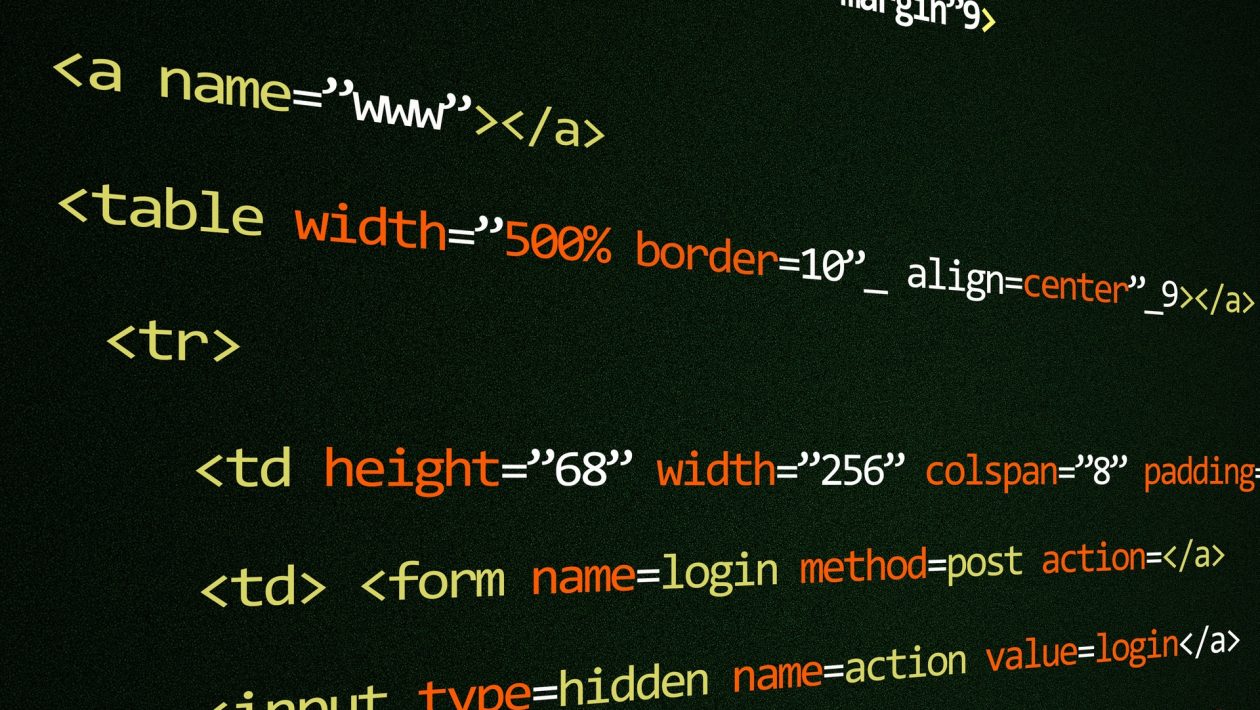Having programming skills has become an essential requirement, a necessity to be honest, in the world we currently live in. With all the technologies, electronic gadgets, and devices that we use today, developers have built them on programs using one or more programming languages and databases. Among the many programming languages that you must have heard of like Python, R, C, C++, and so on, Java is an extremely popular one. Although you can learn other languages as well Java is one of the most-frequently-used ones. This is why Java is a popular and one of the most sought-after languages in the industry today. Here, you will learn about the Java programming language and several data types in Java.
Table of Contents
What is Java?
According to Edureka’s definition of Java, it is a concurrent, class-based, object-oriented, and a general-purpose language. Java comprises of features and software like Java Virtual Machine (JVM) and Java Virtual Environment (JRE) that allow you to create, edit, and run Java programs in any platform. You can consider the JVM as the cornerstone of the platform of this language.
Like C++, Java is also an object-oriented programming language, however, it just consists of more simplified and advanced features. You can access programs and codes at no cost. A unique feature of this object-oriented language is that you can run Java programs on any platform.
Let’s take a look at some of the unique points of Java programming language:
- Its concurrency feature allows you to execute as many statements as you require in a go rather than executing them in a sequential manner.
- Java is an object-oriented and a class-based programming language.
- Another unique feature of the Java programming language is that it is independent in nature. It follows the “Write once, Run anywhere” logic. This means that the code you compile in Java can easily run on any platform that supports Java language.
Java is basically a computing platform that you can use to build various applications.
Let’s now take a look at some of the commonly-used features of Java.
Features of Java
You have read in detail about Java already, so check out some of its features below:
Simple
The simplicity of Java plays a significant role in making the life of a Programmer easier. Unlike other languages like C++, Java eliminates all complexities including operator overloading and pointers.
Pointers
This programming language is platform-independent. This means, no matter which platform you choose to write your application in, you can effortlessly port it to another.
Object-oriented
In Java, everything is an object possessing any behavior or state. Besides, in the numerous operations that you perform in the respective program, you have to make use of them.
Secure
Once you compile the code, Java converts it into byte code so that it is not comprehendible by human beings. Moreover, it does not make use of any explicit pointer. Rather, it runs the code inside its sandbox in order to prevent any suspicious activities from taking place through untrusted sources. In addition, it allows you to build tamper-free and virus-free applications as well as systems.
Dynamic
Java can easily adapt to a trending and evolving environment supporting the dynamic type of memory allocation. This acts as a helping hand in terms of reducing wastage of memory and increasing application performance.
Distributed
Java allows you to build distributed applications with its features. With the help of Remote Method Invocation (RMI), the code or the program has the capability to invoke a method from another program over a network to get the result you desire. Besides, you can easily access files via method calling features from any system over the internet.
Robust
This language comprises a strong system of memory management that eliminates error while checking the code at the time of compilation and runtime.
High Performance
It helps you achieve high-performance via byte code usage that you can easily convert into machine code. With the help of Just-In-Time (JIT) compilers, it assists in enabling this feature.
Interpreted
Java compiles its code into byte codes that the JRE further interprets.
Multithreaded
It supports the execution of multiple threads such as a set comprising the primitives in synchronization. This eases the programming process with respect to threads.
Now that you have got a brief understanding of this object-oriented programming language and its several features, you will read about components of Java, where you can use Java and for what purposes. Later, you will move onto the various data types in Java.
Java Components
Java majorly comprises of three components that are:
- Java Virtual Machine (JVM)
- Java Runtime Environment (JRE)
- Java Development Kit (JDK)
Java Virtual Machine (JVM)
It is a theoretical machine. It is a particular that offers run-time conditions in which you have the option to execute the bytecode in Java. It mainly follows three forms of documentation:
- Specification
- Implementation
- Runtime Instance
Java Runtime Environment (JRE)
JRE alludes to a particular runtime situation in which you have the option to execute the bytecode in Java. It executes the JVM (Java Virtual Machine) and gives all the help documents including the class libraries that JVM utilizes during runtime. So, JRE is nothing other than a package of software that involves whatever necessary to run a Java program. Fundamentally, it’s an execution of the JVM which truly exists.
Java Development Kit (JDK)
It is the apparatus important to:-
- Document
- Compile
- Package Java codes
The JDK totally incorporates JRE which contains apparatuses for Java software engineers. Java Development Kit is without charge, that means you do not need to pay additionally for it. Alongside JRE, it incorporates a mediator/loader, a compiler (javac), an archiver (container), a generator of documentation (Javadoc), and different apparatuses required in Java improvement. To put it plainly, it contains JRE + advancement tools.
Use of Java
Nowadays, you can use Java in numerous sectors across all industries. It dominates almost every department and field of work today, Some of the popular fields that make use of Java are as follows:
- Retail
- Banking
- Information Technology (IT)
- Stock Market
- Android Applications
- Web Pages
- Web Applications
- Financial Services
- Big Data
- Research and Development
Why don’t you dive into the history of this programming language? After this, you can read about the varied range of data types that are available for you to understand and use.
Java’s History
James Gosling developed Java in 1995 along with his team members, Patrick Naughton and Mike Sheridan. They created this language for the various services in the digital gadgets for Sun Microsystems like televisions, set-up boxes, and more.
Now that you have got an overview of Java, its various features, and its brief history, it is time to learn about the various types of data in Java.
Data Types in Java
Data Types in Java are variable attributes that inform the interpreter regarding how the developer plans on using specific variables. They define the various operations that you can perform on this data along with the type of data you can store in them. You can classify Java data types largely in the following two types:
- Primitive Data Types
- Non-Primitive Data Types
Let’s understand these data types in detail.
Primitive Data Types in Java
Java language pre-defines its primitive data type. You need to specify the data type and size of variable values along with no extra methods. Majorly, you can classify them into four categories – integer, character, float, and boolean. Though, you can generally categorize them into the following eight types:
- Byte
- Boolean
- Char
- Int
- Short
- Long
- Float
- Double
Byte
It is an 8-bit marked two’s supplement integer that has the capability to store whole values lying between – 128 to 127. Besides, this data type is useful for sparing memory in huge amounts.
Boolean
This data type involves some information and can store just two values – true or false. Moreover, you can utilize this data type to keep a track of true and false conditions.
Char
Char data type allows you to store an individual character. You should encase the character inside single quotes, similar to ‘E’ or ‘e’. On the other hand, you can likewise make use of ASCII values in order to show specific characters.
Int
Int data type has the ability to store integers from – 2147483648 to 2147483647. For the most part, developers prefer int data when they create variables using numerical values.
Short
The short data type is comparatively greater than byte as far as size is in concern while being less than an integer. It stores values ranging from – 32,768 to 32767. Further, the short data type’s default size is 2 bytes.
Long
Long is a 64-bit two’s supplement integer. This means that the size of this Java data type is 64 bits while its value extends from – 263 to 263-1.
Float
The float data type has the ability to store partial values from 3.4e−038 to 3.4e+038. However, you need to keep in mind that you must end this float value with an “f”. You should utilize this data type at as and when you need a value with a decimal point.
Double
This double data type has the capability to store fractional values from 1.7e−308 to 1.7e+308. Though, make a note that you must always end any double value with a “d”.
Non-Primitive Data Types in Java
The programming language does not technically define these data types rather, the developers and programmers create them. You can also call them reference data types in Java or object references as they refer to a memory location that actually stores the data. You can depict non-primitive data types into the following four types:
- String
- Array
- Class
- Interface
String
A string data type is a succession of characters. Yet, in Java, a string is basically an object that acts as a representation of a character sequence. You can make utilization of the java.lang.String class in order to build a string object.
Array
Java arrays are data structures actualized of homogeneous nature that you can implement in Java as objects. They store at least one value of a particular data type besides providing index access in order to store that value. You can access a particular element in a given array using its index value.
Class
A Java class is nothing other than a blueprint that incorporates each and every data of yours. Moreover, A class involves fields(variables) and functions or methods that assist in portraying the conduct of specific objects.
Interface
Similar to a class, an interface may include variables as well as methods. However, the methods you pronounce in an interface are abstract by default. This means it includes only method signature without a body.
You have learned in-depth about the various types of data that Java offers. Now, you will read about a few differences between primitive and non-primitive types of data.
Primitive Data vs Non-Primitive Data
Following are some of the most common differences between these data types:
- Java pre-defines primitive data types. However, programmers and developers create non-primitive data types, Java does not define them.
- You can make use of non-primitive types of data to call functions in order to perform or carry out specific operations, while primitive data types cannot.
- A primitive data type has a value consistently, though non-primitive data type can also be void or null.
- A primitive data type begins with a lowercase character or alphabet, while non-primitive data types begin with an uppercase alphabet.
- The size of a primitive data type is mainly dependent upon its data type. On the other hand, all non-primitive data types are of the same size.
Conclusion
This blog talks in detail about the Java programming language. It includes a summary of its history, its various features, some of the major components of this language, and more. However, its main aim is to inform you of the numerous data types that are available for you to utilize in Java. Finally, you came across the differences between the two classifications of Java data types, namely, primitive and non-primitive.To learn more about these data types, you can also refer to a few data types in Java pdf files.











